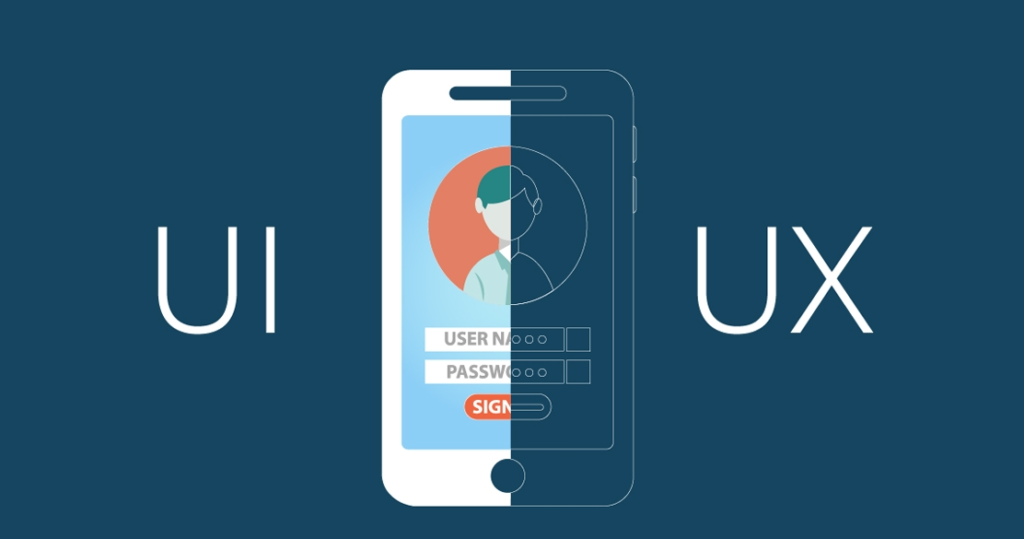Transforming Digital Experiences: 10 Creative UI-UX Concepts
The success of digital products is largely determined by the user interface (UI) and user experience (UX) in today’s digital environment. User expectations are evolving along with technology. Designers need to always be thinking ahead of the curve and bringing new UI-UX concepts that improve usability, satisfaction, and engagement into practice. The following five innovative ideas have the potential to revolutionize digital experiences:
Table of Contents

Voice-Activated Interfaces:
By including voice commands into UI design, interactions are streamlined and users can navigate and utilize the device hands-free. Natural language processing enables apps and devices to accurately comprehend voice commands, allowing for smooth interaction in a variety of scenarios, such as car interfaces and smart homes.
Gesture-Based Navigation:
Gesture-based navigation introduces an interactive element by enabling users to manipulate tasks via natural gestures like pinches, swipes, and touches. This idea improves user control by doing away with conventional buttons, especially in touch-enabled devices like tablets and smartphones.

Augmented Reality (AR) Integration:
Augmented Reality (AR) provides immersive experiences that improve product visualization, training simulations, and gaming by obfuscating the distinction between the digital and physical worlds. Augmented Reality (AR) enhances interactions and makes novel features possible, such virtual try-ons for retail products or interactive learning environments, by superimposing digital content over the user’s actual surroundings.
Microinteractions:
Subtle animations or feedback loops that appear within a user interface (UI) to direct users and give them feedback on their actions are called microinteractions. These little interactions, which can be anything from loading indicators to button animations, improve usability and make interfaces feel alive and active for users.

Dark Mode Optimization:
Due to its attractive appearance and possible energy savings on OLED screens, dark mode has grown in popularity. When designing interfaces with dark mode optimization, contrast, color schemes, and readability must be carefully considered in order to guarantee a smooth transition between light and dark themes and minimize eye strain in low-light conditions.
Progressive Web Apps (PWAs):
PWAs offer quick performance, offline functionality, smooth device feature integration, and the best of both online and native app experiences. PWAs bridge the gap between websites and native applications by utilizing contemporary web technologies like service workers and responsive design to create a seamless experience across devices.

Biometric Authentication:
Biometric authentication, which includes facial recognition and fingerprint scanning, makes user logins easier while enhancing security. Through the use of biometric identifiers in place of conventional passwords, UI/UX designers can produce seamless authentication experiences that put convenience and security first.
Personalized Content Recommendations:
By using machine learning algorithms, personalized content suggestions make predictions about the interests and actions of users, providing them with experiences that are specifically designed to keep them interested and happy. UI-UX designers may create content that connects with specific users and increases engagement and retention by analyzing user data, such as browsing history and interactions.

Guidelines for Accessible Design:
UI/UX design should prioritize accessibility to make sure digital products are accessible and useable by people of all abilities. By putting accessible design principles into reality, individuals with disabilities can interact and navigate digital experiences with ease. Some of the concerns that are included in this process are keyboard navigation, color contrast, and screen reader compatibility.
Emotional Design Elements:
Deeper engagement and the development of enduring emotional relationships with users are fostered by the inclusion of emotional design features, which arouse sentiments of joy, empathy, and connection. Whether it’s through humorous animations, perceptive content, or sympathetic user interactions, UI-UX that incorporates emotional design aspects can produce memorable experiences that speak to consumers personally.

UI-UX Concepts:
The integration of these 10 modern UI-UX concepts into digital experiences has the capacity to completely transform the way users engage with goods and services on a variety of platforms and devices. Designers may drive innovation and establish new benchmarks for usability and engagement by embracing evolving technology, putting user requirements first, and encouraging creativity.
Keeping up with new trends and pushing the limits of UI-UX design will be crucial for developing unique and powerful experiences that please users and propel company success in a market that is becoming more and more competitive as the digital landscape continues to change. Brilliko Institute of Multimedia provides knowledge about UI-UX Concepts.




